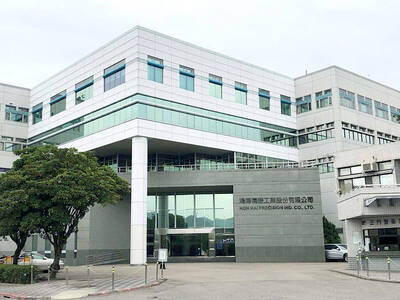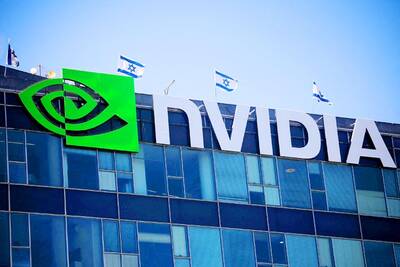Sapporo Holdings Ltd is planning to set up a brewery in the US by the end of 2024, as the top-selling Japanese beer in the US market seeks to expand its market share and cut costs.
“I would like to have a production base on the west coast,” Hiroyuki Nose, Sapporo Breweries’ vice president of marketing, said in an interview. “We make and import most of it from Canada and there are logistical costs. This is a challenge for us.”
The Tokyo-based beverage maker has not been able to scale up beer brewing in North America — its largest overseas market, said Nose, who is set to become president of Sapporo Breweries at the end of this month.
Sapporo might also look at acquiring a brewery or expanding its contract manufacturing in the US as part of the efforts, he said, declining to share more details, such as investment or the brewing capacity being planned.
A presence on US soil would not only save transportation costs for Sapporo, but also allow it to better penetrate what the Brewers Association, a craft-beer trade group, says is a US$116 billion US beer market.
The company predicts sales volume of its Sapporo Premium beer to increase 20 percent this year in North America, as demand recovers from the COVID-19 pandemic.
Although it lags rivals in its home market — it is the fourth-largest beer maker in Japan — Sapporo had an early start in the US, to which it began exporting in 1964, and has become a popular offering at restaurants.
Sapporo also owns California-based craft beer maker Anchor Brewing, which it purchased in 2017. A small amount of its Sapporo Premium beer sold in the US is currently brewed through contract manufacturing, and the rest is imported from Canada and Vietnam.
The North American market contributed about one-fifth of the company’s alcoholic beverage sales of ¥285.4 billion (US$2.63 billion) last year. About 70 percent of its overseas beer brand, Sapporo Premium, was sold in the US and Canada.
Beer makers worldwide have been hit hard by the pandemic, as the virus upended how consumers dine out and drink. That meant beer and alcohol sales to restaurants dropped off, while canned drinks sold through retail channels did well.
While Sapporo’s alcohol sales fell 13.6 percent last year, the North America unit’s sales decrease of 5.3 percent was much smaller by comparison and the segment’s profit also grew.
The fall was stemmed partially by a larger contribution from store sales, as more drinkers shopped for home consumption.
Sales actually grew in Canada, where about 90 percent of its beer sales are through retail channels, Nose said.

Shares in Taiwan closed at a new high yesterday, the first trading day of the new year, as contract chipmaker Taiwan Semiconductor Manufacturing Co (TSMC, 台積電) continued to break records amid an artificial intelligence (AI) boom, dealers said. The TAIEX closed up 386.21 points, or 1.33 percent, at 29,349.81, with turnover totaling NT$648.844 billion (US$20.65 billion). “Judging from a stronger Taiwan dollar against the US dollar, I think foreign institutional investors returned from the holidays and brought funds into the local market,” Concord Securities Co (康和證券) analyst Kerry Huang (黃志祺) said. “Foreign investors just rebuilt their positions with TSMC as their top target,

REVENUE PERFORMANCE: Cloud and network products, and electronic components saw strong increases, while smart consumer electronics and computing products fell Hon Hai Precision Industry Co (鴻海精密) yesterday posted 26.51 percent quarterly growth in revenue for last quarter to NT$2.6 trillion (US$82.44 billion), the strongest on record for the period and above expectations, but the company forecast a slight revenue dip this quarter due to seasonal factors. On an annual basis, revenue last quarter grew 22.07 percent, the company said. Analysts on average estimated about NT$2.4 trillion increase. Hon Hai, which assembles servers for Nvidia Corp and iPhones for Apple Inc, is expanding its capacity in the US, adding artificial intelligence (AI) server production in Wisconsin and Texas, where it operates established campuses. This

H200 CHIPS: A source said that Nvidia has asked the Taiwanese company to begin production of additional chips and work is expected to start in the second quarter Nvidia Corp is scrambling to meet demand for its H200 artificial intelligence (AI) chips from Chinese technology companies and has approached contract manufacturer Taiwan Semiconductor Manufacturing Co (TSMC, 台積電) to ramp up production, sources said. Chinese technology companies have placed orders for more than 2 million H200 chips for this year, while Nvidia holds just 700,000 units in stock, two of the people said. The exact additional volume Nvidia intends to order from TSMC remains unclear, they said. A third source said that Nvidia has asked TSMC to begin production of the additional chips and work is expected to start in the second

US President Donald Trump on Friday blocked US photonics firm HieFo Corp’s US$3 million acquisition of assets in New Jersey-based aerospace and defense specialist Emcore Corp, citing national security and China-related concerns. In an order released by the White House, Trump said HieFo was “controlled by a citizen of the People’s Republic of China” and that its 2024 acquisition of Emcore’s businesses led the US president to believe that it might “take action that threatens to impair the national security of the United States.” The order did not name the person or detail Trump’s concerns. “The Transaction is hereby prohibited,”